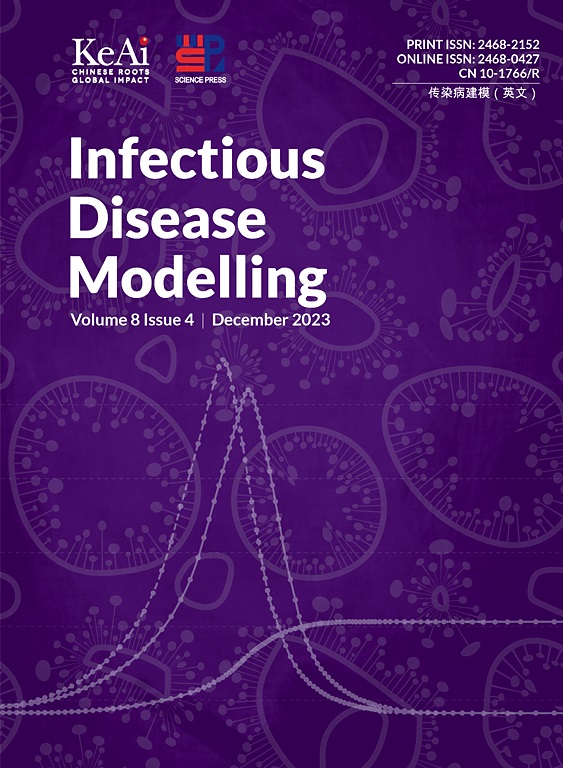Modelling the impact of vaccination on cholera transmission dynamics under stratified populations and seasonality
IF 2.5
3区 医学
Q1 Medicine
引用次数: 0
Abstract
Different types of oral cholera vaccines (OCVs) are currently available in the global market to combat cholera epidemic. In most of developing countries, there is comparatively limited deployment of vaccination programs. In this study, we develop a non-linear deterministic mathematical model to investigate the dynamics of cholera in the presence of vaccination under stratified population, and taking into account the seasonality of the disease dynamic. The model stratifies the total population into two strata based on level of exposure or individuals risk status. We use reported cholera data to estimate the values of model parameters using the least square method together with the fminsearch function in the MATLAB optimization toolbox. Sensitivity analysis was performed to identify the impact of vaccination on cholera transmission dynamics. Numerical results show that the reproduction numbers were 3.35 and 2.6 in more and less exposed population, respectively, with an average value of the whole population equal to 2.98. Specifically, our findings indicate that at least 70 % of the most exposed population needs to be vaccinated to halt transmission within that group, while a minimum of 62 % of the less exposed population must be vaccinated to halt transmission in this population. We further observe that the vaccination rate significantly impact the amplitude of the epidemic curves. Our findings suggest that vaccination of susceptible population stratified with a certain priority (e.g., level of exposure or individual's risk status) against the disease can reduce the transmission of cholera, potentially slowing the spread of the bacteria in a population.
在分层人群和季节性条件下,模拟疫苗接种对霍乱传播动态的影响
目前,全球市场上有不同类型的口服霍乱疫苗,可用于防治霍乱流行。在大多数发展中国家,疫苗接种计划的部署相对有限。在这项研究中,我们开发了一个非线性确定性数学模型来研究霍乱在分层人群中接种疫苗的动态,并考虑到疾病动态的季节性。该模型根据暴露水平或个人风险状况将总人口分为两层。我们使用报告的霍乱数据,结合MATLAB优化工具箱中的fminsearch函数,使用最小二乘法估计模型参数的值。进行敏感性分析以确定疫苗接种对霍乱传播动态的影响。数值结果表明,暴露程度高和暴露程度低的种群的繁殖数分别为3.35和2.6,整个种群的平均值为2.98。具体而言,我们的研究结果表明,至少70%的暴露最多的人群需要接种疫苗,以阻止该人群中的传播,而至少62%的暴露较少的人群必须接种疫苗,以阻止该人群中的传播。我们进一步观察到,疫苗接种率显著影响流行曲线的振幅。我们的研究结果表明,按一定优先级(例如,暴露水平或个人风险状况)分层的易感人群接种疫苗可以减少霍乱的传播,从而可能减缓细菌在人群中的传播。
本文章由计算机程序翻译,如有差异,请以英文原文为准。
求助全文
约1分钟内获得全文
求助全文
来源期刊

Infectious Disease Modelling
Mathematics-Applied Mathematics
CiteScore
17.00
自引率
3.40%
发文量
73
审稿时长
17 weeks
期刊介绍:
Infectious Disease Modelling is an open access journal that undergoes peer-review. Its main objective is to facilitate research that combines mathematical modelling, retrieval and analysis of infection disease data, and public health decision support. The journal actively encourages original research that improves this interface, as well as review articles that highlight innovative methodologies relevant to data collection, informatics, and policy making in the field of public health.
 求助内容:
求助内容: 应助结果提醒方式:
应助结果提醒方式:


